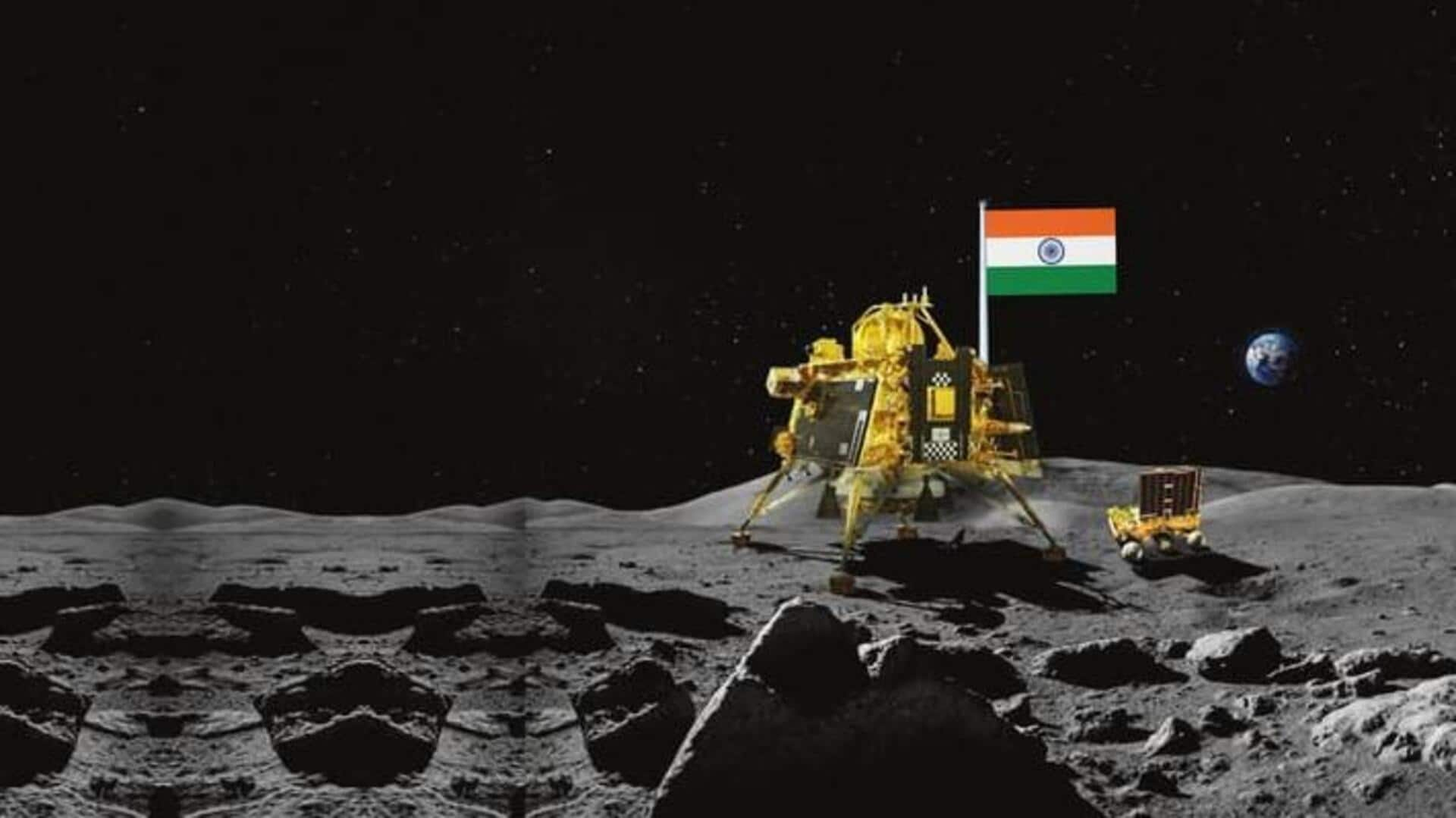
Chandrayaan-3: Pragyan rover begins exploring Moon's south pole
What's the story
Chandrayaan-3 clocked a world first with a soft and safe touchdown near the Moon's south pole yesterday. Now, the Indian Space Research Organisation (ISRO) has confirmed that the Pragyan rover—which was housed inside the Vikram lander all along—has been deployed on the Moon. "The Ch-3 Rover ramped down from the Lander and India took a walk on the Moon!" said ISRO in a post on X. The rover's deployment marks yet another significant step forward for the lunar mission.
Twitter Post
Chandrayaan-3 rover now deployed
Chandrayaan-3 Mission:
Chandrayaan-3 ROVER:
Made in India 🇮🇳
Made for the MOON🌖!
The Ch-3 Rover ramped down from the Lander and
India took a walk on the moon !
More updates soon.#Chandrayaan_3#Ch3 — ISRO (@isro) August 24, 2023
Deployment
President Murmu congratulates ISRO on Pragyan's successful deployment
Chandrayaan-3's Vikram lander touched down on the Moon at 6:03pm yesterday. ISRO teams then had to wait for the lunar dust to settle down at the landing site to proceed with the next operations. The rover is said to have been deployed on the night of August 23/24. However, it was only earlier this morning that ISRO confirmed the development. President Droupadi Murmu congratulated ISRO for the successful rover deployment and expressed excitement about the information Pragyan will gather.
Twitter Post
'Pragyan's deployment marks the success of another stage of Chandrayaan-3'
I once again congratulate the ISRO team and all fellow citizens for successful deployment of Pragyan-rover from inside Vikram-lander. Its rolling out a few hours after the landing of Vikram marked the success of yet another stage of Chandrayan 3. I look forward with excitement,…
— President of India (@rashtrapatibhvn) August 24, 2023
Experiments
Pragyan will perform two crucial experiments
The Pragyan rover is set to conduct two vital experiments, both of which are related to assessing the mineral composition of the lunar surface. One experiment involves the use of a laser beam to identify the Moon's elemental composition. The other one is involved with measuring X-ray fluorescence from alpha particles emitted by radioactive materials present on the surface of the Moon.
Details
Vikram lander to explore Moon's atmosphere, geology
Chandrayaan-3's Vikram lander will have its own share of probing to do on the lunar surface. The lander has three payloads: RAMBHA, ILSA, and ChaSTE. Radio Anatomy of Moon Bound Hypersensitive ionosphere and Atmosphere (RAMBHA) payload will study the Moon's charged atmosphere. Instrument for Lunar Seismic Activity (ILSA) will observe seismic activity on the Moon or in other words, scan for moonquakes. Lastly, Chandra's Surface Thermophysical Experiment (ChaSTE) instrument will measure the lunar surface temperature.
Moon's south pole
Chandrayaan-3 will shed light on Moon's mysterious south pole
Building on the findings of Chandrayaan-1, Chandrayaan-3 aims to further investigate the presence of water at the Moon's south pole region. The discovery of water in this region could have far-reaching implications for future crewed and uncrewed lunar missions. If water molecules can be split into hydrogen and oxygen, they could potentially provide resources for future human habitation on the Moon. Additionally, identifying essential minerals could offer insights into the Moon's evolution.
Objectives
Chandrayaan-3 mission objectives: Safe landing, roving, in-situ investigations
With a successful soft landing on the Moon, Chandrayaan-3 achieved one of its three core objectives. This crucial feat makes India only the fourth country, after the US, Russia, and China, to have a presence on the Moon. Up next, by roving on the lunar surface and conducting in-situ scientific investigations, the remaining two mission objectives will be fulfilled. The mission will last for one lunar day which is equal to 14 days on Earth.
Twitter Post
Moon's surface as snapped by Chandrayaan-3 after landing
Chandrayaan-3 Mission:
The image captured by the
Landing Imager Camera
after the landing.
It shows a portion of Chandrayaan-3's landing site. Seen also is a leg and its accompanying shadow.
Chandrayaan-3 chose a relatively flat region on the lunar surface 🙂#Chandrayaan_3… pic.twitter.com/JQLFBBjcbe — LVM3-M4/CHANDRAYAAN-3 MISSION (@chandrayaan_3) August 24, 2023